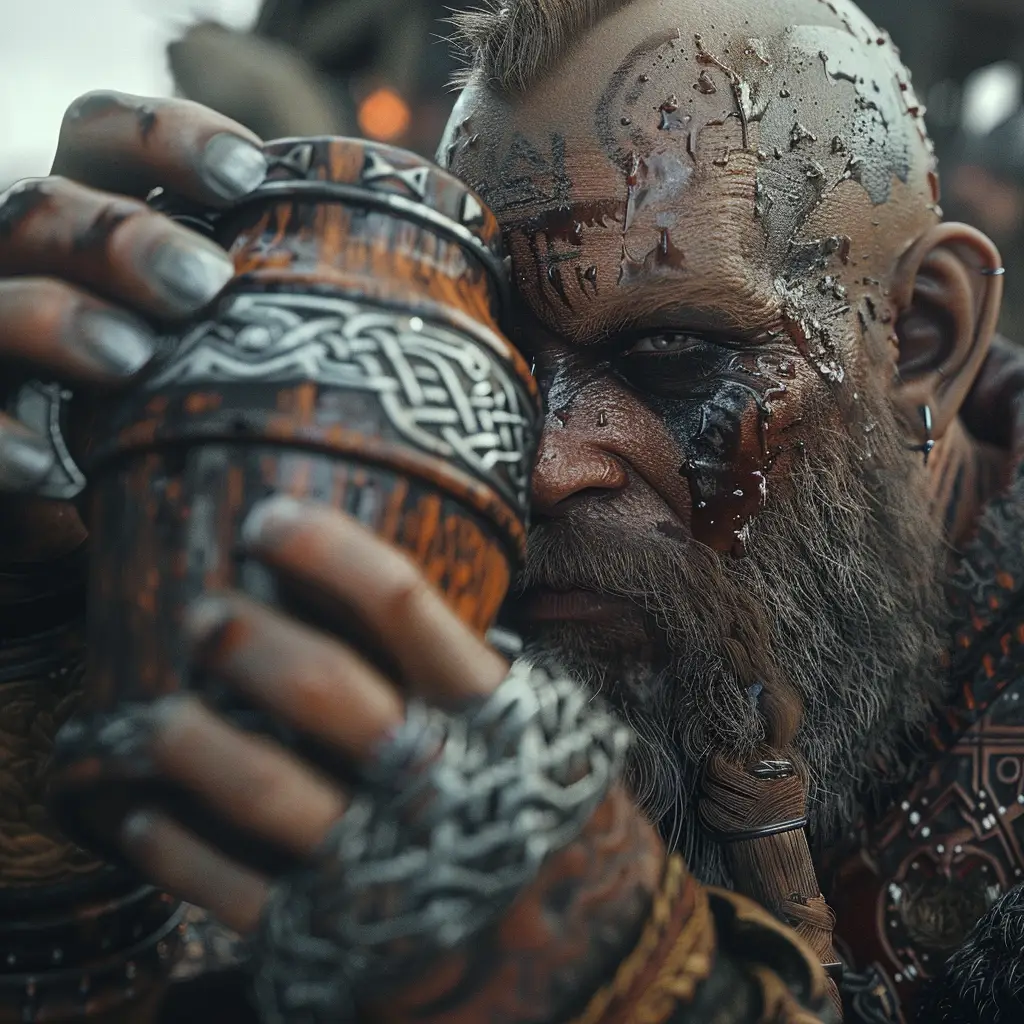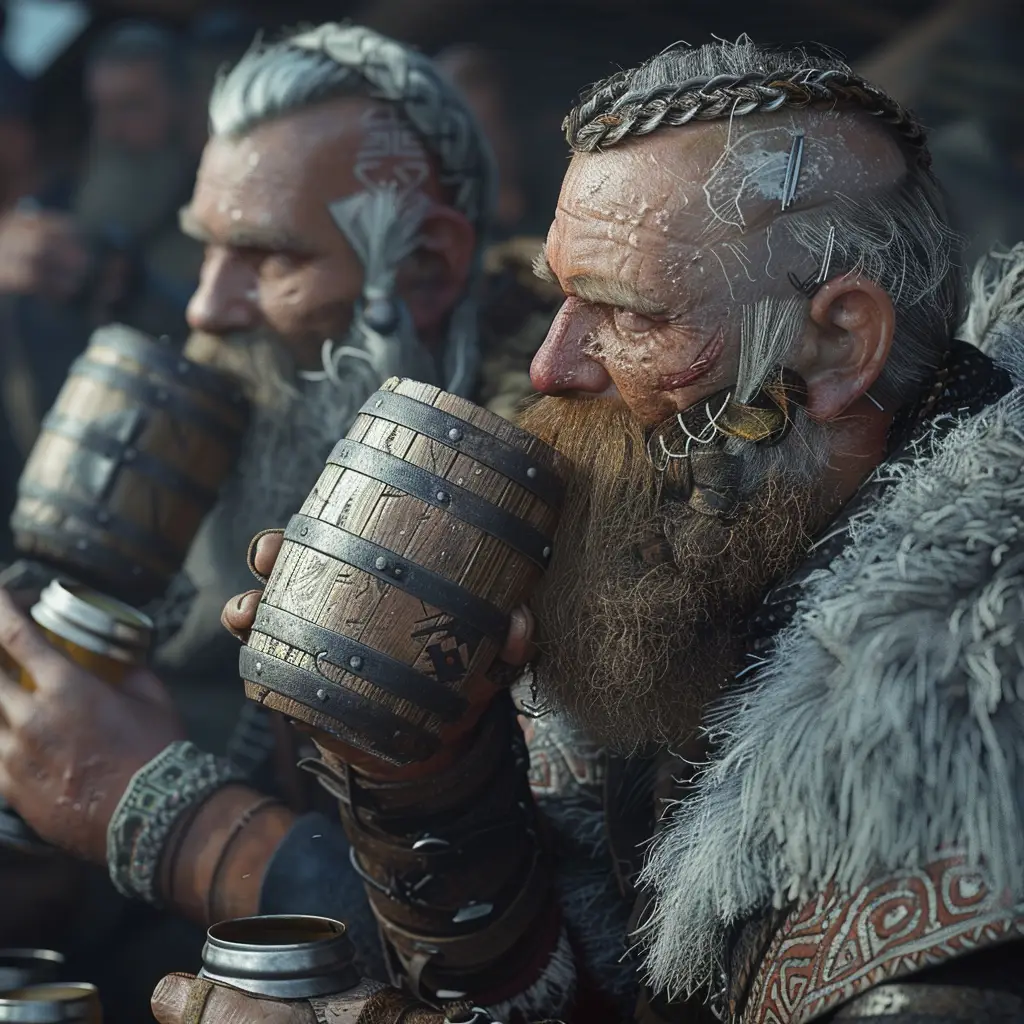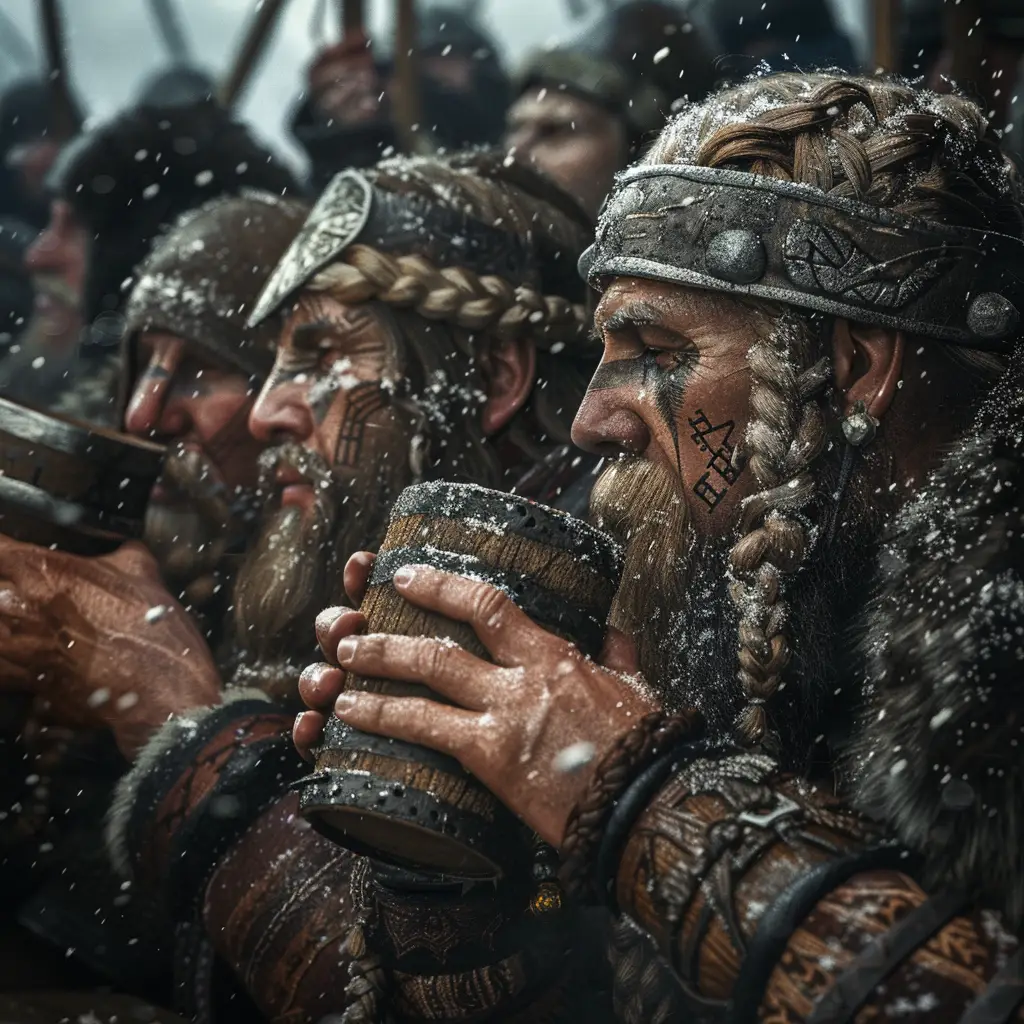Viking drinking culture was a significant part of their social and ritual life, woven into their daily activities and ceremonies.
Drinks of Choice
Mead: The most famous Viking drink, mead is made from fermented honey, water, and sometimes various fruits and spices. It was a symbol of wealth and status.
Ale: A staple in the Viking diet, ale was consumed daily by people of all ages, including children. It was made from barley and sometimes flavoured with herbs.
Wine: While not as common as mead or ale, wine was imported and enjoyed by the wealthier Vikings, often as a display of status.
Drinking Vessels
Horn: Drinking horns, made from animal horns, were iconic. They were often elaborately decorated and used during special occasions and ceremonies.
Wooden Cups: Everyday drinking was more likely done from wooden or pottery cups, which were more practical for daily use.
Social and Ritual Drinking
Feasts and Gatherings: Drinking was a central part of Viking feasts and gatherings. These events were held to celebrate victories, honour gods, and mark important life events like births, weddings, and funerals.
Symbel: A ritualistic drinking ceremony, the symbel involved passing a horn or cup around the group, with each person taking a drink and making a boast, an oath, or a toast to gods and ancestors.
Sacrificial Rites: Alcohol, particularly mead, played a role in sacrificial rites to the gods. It was offered to deities during religious ceremonies to gain favour or ensure good fortune.
Taverns and Mead Halls
Mead Halls: Central to Viking social life, mead halls were large communal buildings where people gathered to drink, feast, and listen to stories and songs performed by skalds (poets).
Taverns: While not as formal as mead halls, smaller taverns and alehouses were common in Viking towns, providing a place for locals to socialize and relax.
Drinking Customs and Etiquette
Toasts and Boasts: Toasting was an important part of the drinking culture, often done to honour gods, kings, and fallen heroes. Boasting about one’s achievements was common, and these boasts were taken seriously, sometimes leading to challenges or duels.
Sharing: Sharing a drink was a sign of camaraderie and trust. Refusing a drink could be seen as an insult.
Raise a cup and shout SKÅL……



